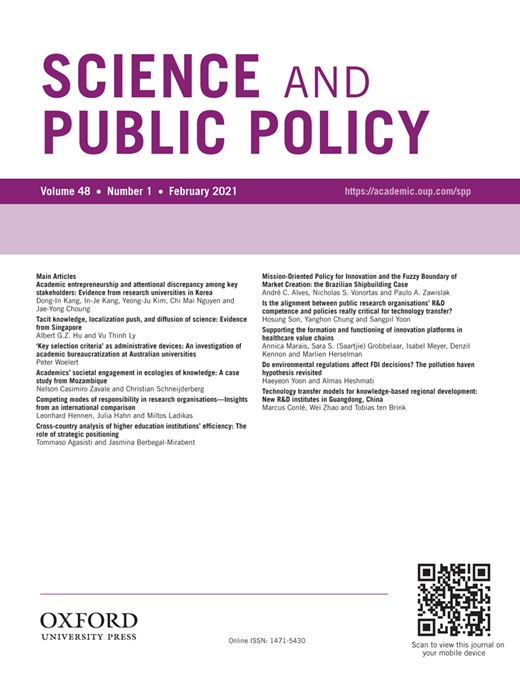-
Views
-
Cite
Cite
Tommaso Agasisti, Jasmina Berbegal-Mirabent, Cross-country analysis of higher education institutions’ efficiency: The role of strategic positioning, Science and Public Policy, Volume 48, Issue 1, February 2021, Pages 66–79, https://doi.org/10.1093/scipol/scaa058
Close - Share Icon Share
Abstract
Universities are highly heterogeneous institutions and this diversity needs to be acknowledged when assessing their performance. Using an unbalanced panel that covers a 3-year period (2011–3) with 761 observations coming from 307 universities located in 8 European countries, this study examines the extent to which strategic choices regarding international positioning and scope determine how efficient universities are in the allocation of their internal resources. Three main groups of universities are identified, according to their internationalisation and scope: world-class, flagship, and regional. Next, we model universities’ objective function as a mix of teaching, research, and third mission endeavours, and calculate efficiency scores. A meta-frontier analysis based on data envelopment analysis is used. This approach allows comparing efficiency frontiers across groups and relative to a common frontier. Policy implications within and between groups are discussed.



